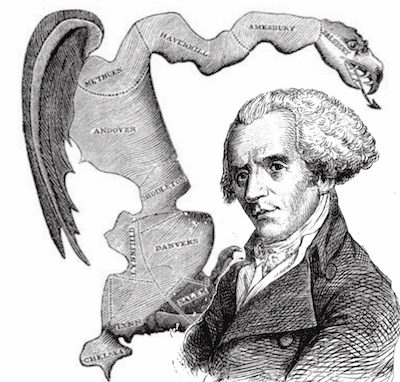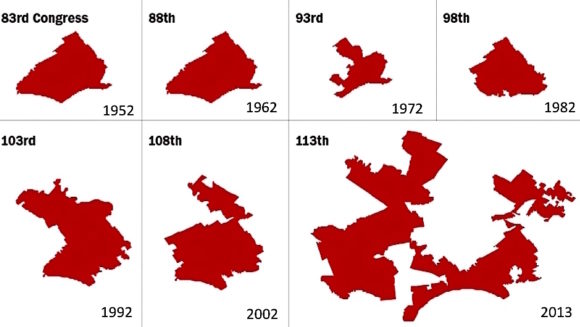About Gerrymandering
Pennsylvania WAS the poster child for gerrymandering.

Gerrymandering is the manipulation of electoral maps for political advantage.
In 1812, Massachusetts Governor Elbridge Gerry backed a redistricting plan favoring his own party, the Democrat-Republicans. One district was so long, narrow, and twisted that it came to be lampooned as a salamander. The press combined Gerry’s name with “salamander”. Ever since, the practice of drawing distorted districts has been known as gerrymandering.
By multiple respected forms of analysis, Pennsylvania’s congressional districts were among the worst in the country after the 2011 redistricting process. Those districts were changed after a 2017-2018 lawsuit, but for the rest of that decade, PA state senate and house districts continued to be among the most gerrymandered by any measure available.
How did things get so bad?
- Politicians can use sophisticated mapping technology and surgically precise data to pick exactly who they want in or out of a voting district.
- Pennsylvania is one of the few remaining large swing states. What happens in our state has an outsize impact on Congress.
- Current PA redistricting processes put mapping power in the hands of just a few leaders, with limited built-in checks and balances.
Gerrymandering is used to determine elections
In Pennsylvania, political leaders draw district lines to decide elections before a vote is cast. Here are some ways they manipulate maps to protect incumbents and keep their party in power:
Cracking
Cracking reduces the voting power of a certain party or community by splitting its population and spreading its members among several districts where they become an irrelevant minority.
Packing
Packing concentrates voters of one party or community in as few districts as possible to reduce their influence in the remaining districts.
Sweetheart gerrymandering
Sweetheart gerrymandering (also called buddymandering) is a tacit deal to protect incumbents of both parties, regardless of what voters want.
gerrymanders are designed to protect incumbents of both parties. It’s a tacit deal between parties to keep to the status quo—regardless of what voters want.
Prison-based gerrymandering
Prison-based gerrymandering counts incarcerated people in the district where they are incarcerated rather than in their home districts. This gives voters from districts with large prisons more influence than they should have while reducing representation for residents of districts with high incarceration rates.
Gerrymandering hurts our communities
From 2010 to 2013, Pennsylvania’s 7th congressional district, nicknamed “Goofy kicking Donald Duck,” was regularly described as one of the most gerrymandered districts in the country. The problem wasn’t just its odd shape; it was a prime example of cracking. The lines spread poor urban communities out among suburban and rural areas.

Consider the cracking of Reading, the fifth largest city in Pennsylvania. The lines of the 7th were drawn to put Reading, one of the poorest urban communities in the U.S., in the same district as Lancaster farmers, wealthy landowners in rural Chester County, and politically-diverse Philadelphia suburbs.
While Congressional District 7 was a national scandal, there were similar stories across Pennsylvania in our PA House, Senate and congressional maps from the 2010 redistricting cycle. Many communities and counties were divided far more than necessary, depriving voters of every party a real voice in choosing their representatives.
Let’s end the systems that make gerrymandering possible
For a mix of reasons, including divided government, Supreme Court action, and extensive public outcry and advocacy, current district maps are better by respected measures and have proven far more responsive to voter preferences. But there is nothing in law to protect Pennsylvania redistricting from future partisan manipulation, and nothing to guarantee fair future outcomes. Legislators who felt the harm of previous gerrymanders, and legislators who decried the 2021 process, might consider what could happen in future redistricting if current processes continue.
It’s time for an independent citizens redistricting commission. More and more states are ending the conflict of interest that allows legislators to choose their voters. PA can do that too.